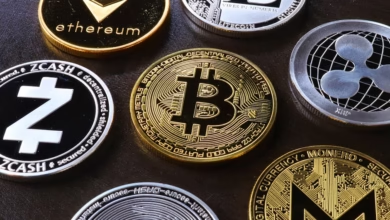Exploring Gold Mining: Techniques, Market Trends, and Sustainable Practices in the Gold Industry

Gold mining has long captivated the interest of investors, economists, and environmentalists alike. As a cornerstone of the global economy, the exploration, extraction, and production of gold continue to evolve, influenced by market trends and technological advancements. This precious metal is not just a valuable commodity; it is also viewed as a safe haven asset, particularly in times of economic uncertainty and inflation. With increasing global gold demand, understanding the intricacies of gold mining—from exploration techniques and extraction methods to the dynamics of the gold market—is essential for anyone looking to invest in gold.
In this article, we will delve into the multifaceted world of gold mining, starting with the various exploration techniques and extraction methods that enable the unearthing of gold reserves. We will also analyze current gold market trends, including fluctuating gold prices and investment opportunities such as gold ETFs, gold futures, and physical gold. Furthermore, we will discuss the importance of sustainability in gold mining, exploring how the industry is striving to balance production with environmental responsibility. Join us as we navigate the rich landscape of gold, from gold coins and jewelry to luxury gold collectibles and the impact of gold smuggling, while also considering the future of gold in the age of cryptocurrency.
- 1. Understanding Gold Mining: Exploration Techniques and Extraction Methods
- 2. The Gold Market: Analyzing Prices, Trends, and Investment Opportunities
- 3. Sustainability in Gold Mining: Balancing Production with Environmental Responsibility
1. Understanding Gold Mining: Exploration Techniques and Extraction Methods
Gold mining is a complex process that involves various stages, beginning with exploration techniques and culminating in the extraction and production of gold. Understanding these stages is crucial for investors and stakeholders interested in the gold market.
Exploration is the first step in the gold mining process, where geologists and mining companies utilize advanced technologies to identify potential gold reserves. Techniques such as geochemical analysis, geophysical surveys, and remote sensing help in mapping out areas with high concentrations of gold. These methods are not only cost-effective but also play a significant role in sustainable gold mining practices by minimizing environmental impact.
Once a viable site is located, extraction methods come into play. The two primary techniques used for gold extraction are open-pit mining and underground mining. Open-pit mining involves removing large quantities of surface material to access gold deposits, making it one of the most efficient methods for large-scale production. In contrast, underground mining is employed when gold is found deeper within the earth, requiring sophisticated technology and safety measures.
As gold prices fluctuate, driven by market trends and global demand, mining companies must adapt their strategies to remain profitable. The gold market is influenced by various factors, including economic stability, inflation rates, and the role of gold as a safe haven asset. Investors often turn to gold ETFs and gold futures as a way to hedge against economic uncertainty, while physical gold, such as gold bars and coins, remains a popular choice for those looking to diversify their portfolios.
The gold trade is further complicated by issues such as gold smuggling and the illegal mining of gold, which can affect gold market analysis and overall production levels. Responsible mining practices and gold recycling initiatives are essential to ensure that gold reserves are managed sustainably, thereby supporting the long-term viability of the gold industry.
In conclusion, understanding the exploration techniques and extraction methods of gold mining is vital for anyone looking to invest in gold. Whether through gold jewelry, collectible coins, or luxury gold items, the gold market remains a significant player in the global economy. With central banks increasingly holding gold as part of their reserves, the future of gold continues to be influenced by economic factors, including inflation and the rise of digital currencies like cryptocurrency. Investors should stay informed about gold production trends to make educated decisions in the dynamic landscape of gold investment.
2. The Gold Market: Analyzing Prices, Trends, and Investment Opportunities
The gold market plays a crucial role in shaping global economic trends and investment opportunities. As a safe haven asset, gold has historically been a reliable store of value, especially during times of economic uncertainty and inflation. Investors often turn to gold as a hedge against inflation, with its prices typically rising when the purchasing power of fiat currencies declines.
Recent trends have shown a notable increase in global gold demand, driven by various factors, including central banks' gold purchases and the rise of gold-backed financial products, such as gold ETFs and gold futures. Central banks around the world continue to bolster their gold reserves, seeing it as a strategic asset to diversify their portfolios and mitigate risks associated with currency fluctuations. This trend has contributed to the stability of gold prices, making it an attractive option for both institutional and retail investors.
In addition to traditional forms of investment, such as gold coins and gold bullion, the market has seen a surge in interest surrounding gold technology and the recycling of gold. Sustainable gold mining practices have gained traction, with consumers increasingly favoring ethically sourced gold for jewelry and collectibles. Furthermore, gold refining processes are evolving to improve efficiency and reduce environmental impact, aligning with the growing demand for sustainable practices in the mining sector.
As the interplay between gold and cryptocurrency continues to unfold, investors are exploring the potential of both asset classes. While some view cryptocurrencies as a modern alternative to gold, others argue that gold's historical stability and intrinsic value make it a superior investment during turbulent times.
In summary, the gold market remains dynamic, influenced by global economic conditions, technological advancements, and evolving investor preferences. Understanding gold market trends, prices, and investment opportunities, such as gold coins investing and luxury gold items, is essential for those looking to navigate this complex landscape effectively.
3. Sustainability in Gold Mining: Balancing Production with Environmental Responsibility
Sustainability in the gold mining industry has become a focal point as stakeholders increasingly recognize the importance of balancing gold production with environmental responsibility. The extraction and processing of gold can have significant impacts on ecosystems, water resources, and local communities. Therefore, integrating sustainable practices is essential for ensuring that the industry can continue to thrive while minimizing harm.
One key strategy in sustainable gold mining is the use of advanced technology that reduces environmental footprints. Innovations in gold refining processes can lower energy consumption and decrease harmful emissions, making operations more efficient. Additionally, the adoption of environmentally friendly techniques, such as bioleaching, allows for the extraction of gold from ore with minimal damage to the surrounding environment.
Gold recycling also plays a crucial role in promoting sustainability. By recovering gold from old electronics, jewelry, and other products, the industry can reduce its reliance on newly mined gold and lessen the impact on gold reserves. This practice not only helps in conserving natural resources but also contributes to the circular economy, where materials are reused and repurposed.
Moreover, the gold market is witnessing a rise in responsible sourcing initiatives. Companies are increasingly focusing on transparency in their supply chains to combat issues such as gold smuggling and unethical mining practices. By adhering to strict environmental and social standards, they can cater to the growing global demand for sustainably sourced gold, particularly among consumers who prioritize ethical considerations when investing in gold jewelry or collectibles.
The interplay between gold and inflation further emphasizes the need for sustainable practices. As central banks stockpile gold as a safe haven asset during inflationary periods, the pressure on gold production intensifies. Therefore, maintaining a balance between meeting this demand and protecting the environment is crucial for the long-term viability of gold investments, including gold ETFs and gold futures.
In summary, sustainable gold mining is not just about minimizing environmental impacts; it also encompasses social responsibility and economic viability. By embracing innovative technologies, promoting gold recycling, and ensuring responsible sourcing, the gold mining industry can align its practices with the growing expectations of investors and consumers, thus securing its position in the evolving gold market.
In conclusion, the multifaceted world of gold mining encompasses a wide range of activities, from exploration and extraction to production and investment. Understanding the various exploration techniques and extraction methods is crucial for stakeholders in the gold market, especially as global gold demand continues to rise. Investors looking to capitalize on gold prices can explore diverse avenues such as gold ETFs, gold futures, and physical gold, including gold coins and bullion.
Furthermore, as we navigate through fluctuating gold market trends, the importance of sustainable gold mining practices cannot be overstated. Balancing production with environmental responsibility is vital for ensuring the longevity of gold reserves and maintaining the ecosystem.
As gold remains a safe haven asset amid economic uncertainties, its role in the investment landscape is more significant than ever, especially in relation to inflation and central banks' gold reserves. Moreover, with the evolution of gold technology and recycling initiatives, the future of gold production looks promising.
In a world where gold smuggling and illicit trade pose challenges, it's essential to promote transparency and ethical practices in the gold market. By embracing sustainability, investors can not only protect their assets—whether in luxury gold jewelry or collectible coins—but also contribute positively to the environment and society.
As we look ahead, staying informed through comprehensive gold market analysis will empower both investors and consumers to make wise decisions in their gold investments. Whether you are a seasoned investor or exploring gold for the first time, understanding the dynamics of gold mining and its impact on the economy will enhance your engagement with this timeless asset.
References:
[Include your list of references here]




